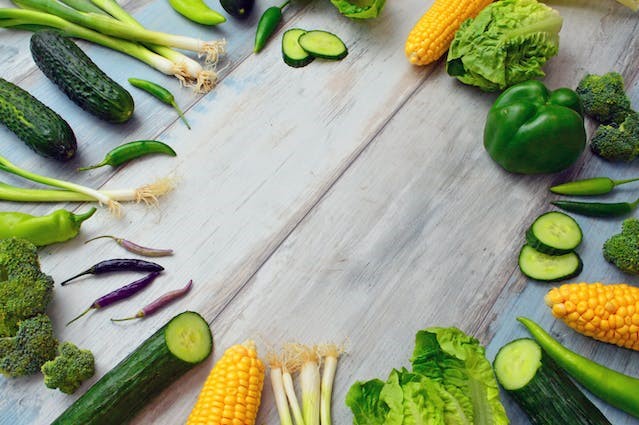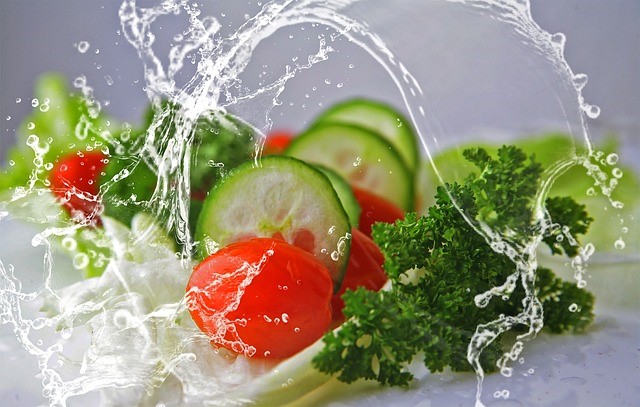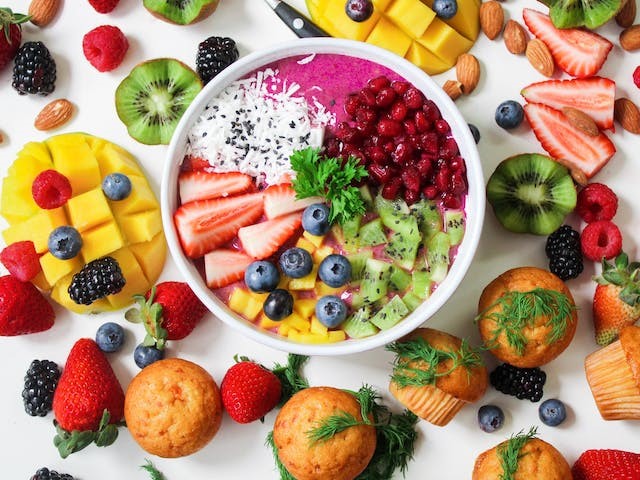In a world where processed foods dominate the market, we must recognize the importance of incorporating natural food colors into our meals. Natural food colors, derived from edible sources such as fruits, vegetables, and spices, offer a range of benefits for our health and well-being. Unlike synthetic dyes, natural food colors are free from harmful additives and chemicals, making them a healthier choice for individuals of all ages.
One of the primary reasons natural food colors are essential is their ability to enhance the visual appeal of our dishes. The vibrant greens, rich reds, and intense blues provided by natural food colors can make the most straightforward meal look delicious and enticing. Studies have shown that the visual presentation of food plays a crucial role in our perception of taste and overall satisfaction. By incorporating natural food colors, we can elevate the appearance of our meals and make them more enjoyable.
Moreover, using natural colors is a simple yet effective way to add flavor to our dishes. Many fruits and vegetables that are used to create these colors have unique taste profiles, which can really enhance the overall flavor of a dish. For example, using beetroot powder to add a deep red hue to a smoothie creates an attractive drink and imparts a subtle earthy and sweet flavor. We can introduce new and exciting taste dimensions to our culinary creations by utilizing natural food colors.
Furthermore, natural food colors offer a range of health benefits that synthetic dyes cannot provide. Many fruits and vegetables that create raw food colors contain essential vitamins, minerals, and antioxidants. For instance, turmeric, a standard natural food color, contains curcumin, a very powerful antioxidant with anti-inflammatory properties. Incorporating raw food colors into our diet can boost our immune system, support healthy digestion, and even reduce the risk of chronic diseases.
Enhancing Taste with Natural Food Colors
When it comes to cooking and baking, taste is paramount. We all strive to create appealing dishes and tantalize our taste buds. Incorporating natural food colors into our culinary creations is an excellent way to enhance the overall taste experience. Natural food colors, derived from fruits, vegetables, and spices, offer a range of flavors that can elevate any dish to new heights.
One significant advantage of employing natural food colors is their ability to add subtle yet distinct flavors to our meals. For instance, matcha powder, a natural green food color derived from powdered green tea leaves, can impart a delicate, earthy, and slightly bitter taste to desserts, smoothies, or savory dishes. This unique flavor profile adds depth and complexity to the taste experience, making it more enjoyable for our palates.
Furthermore, natural food colors can help create a harmonious balance of flavors in our dishes. By carefully selecting appropriate colors, we can enhance the taste of specific ingredients and create a visually appealing and well-rounded flavor profile. For example, using saffron, a natural reddish-orange color derived from the saffron flower, can enhance the natural sweetness of ingredients like carrots or sweet potatoes, resulting in a more flavorful and satisfying dish.
In addition to enhancing taste, natural food colors can provide novelty and excitement to our culinary creations. Experimenting with different colors and flavors can lead to unexpected and delightful combinations. The vibrant hues of natural food colors can make our dishes visually striking, enticing us to explore new tastes and textures. This element of surprise and exploration adds some extra enjoyment to the dining experience.
In conclusion, using natural food colors is an excellent way to enhance the taste of our dishes. By introducing new flavors and creating a harmonious balance, we can elevate our culinary creations to new heights. Natural food colors offer endless possibilities to enhance the taste experience and make every meal memorable, whether adding a subtle earthiness or a burst of sweetness.

Nutritional Benefits of Natural Food Colors
In addition to enhancing our dishes’ visual appeal and taste, natural food colors offer various nutritional benefits. Many fruits, vegetables, and spices used to create these colors are packed with essential vitamins, minerals, and antioxidants, making them valuable to a healthy diet.
One of the primary nutritional benefits of natural food colors is their high antioxidant content. Antioxidants help protect our cells from damage produced by free radicals, leading to various health issues, including chronic diseases. Fruits and vegetables commonly used to create natural food colors, such as berries, spinach, and beets, are rich in antioxidants such as vitamins C and E and beta-carotene. Incorporating raw food colors into our meals can increase our antioxidant intake and support overall health and well-being.
Furthermore, natural food colors are often derived from nutrient-dense ingredients. For example, spirulina, a natural blue-green algae powder used as a food color, is an excellent source of protein, iron, and several essential vitamins. Incorporating spirulina into our dishes can boost our nutrient intake and support various bodily functions, including muscle repair and immune system function.
In addition to their nutritional value, natural food colors are also free from harmful additives and chemicals commonly found in synthetic dyes. Synthetic food colors have been linked to various health concerns, including allergies, hyperactivity, and even cancer. By opting for natural food colors, we can avoid these potential risks and make healthier choices for ourselves and our families.
In conclusion, natural food colors offer a range of nutritional benefits, including high antioxidant content and nutrient density. By incorporating these colors into our meals, we can increase our intake of essential vitamins, minerals, and antioxidants, supporting overall health and well-being. Furthermore, by avoiding harmful additives and chemicals in synthetic dyes, we can make healthier choices for ourselves and our loved ones.
Using Natural Food Colors in Baking
Baking is a culinary art that requires precision, creativity, and attention to detail. Natural food colors can play a significant role in elevating the visual appeal and taste of baked goods. From vibrant cakes to delicate pastries, raw food colors in baking can transform ordinary treats into extraordinary creations.
One primary benefit of utilizing natural food colors in baking is the ability to create visually stunning desserts. Whether a vibrant rainbow layer cake or a pastel macaron, raw food colors can help bring our baking creations to life. By using colors derived from fruits, vegetables, and spices, we can achieve a wide range of shades and hues, allowing for almost endless possibilities in design and presentation.
Moreover, natural food colors can also enhance the taste of baked goods. We can infuse our treats with unique flavors that complement the overall taste profile by incorporating ingredients like matcha powder, cocoa powder, or fruit purees. For example, using beetroot powder in a chocolate cake creates a beautiful red color and adds a subtle sweetness and earthiness to the dessert. This combination of visual appeal and enhanced taste can elevate our baking creations to a new level.
Additionally, natural food colors offer a healthier alternative to synthetic dyes commonly used in baking. Artificial food colors have been linked to various health concerns, including allergic reactions and hyperactivity in children. By opting for natural food colors, we can avoid these potential risks and create a safer and more enjoyable baking experience for everyone.
In conclusion, using natural food colors in baking allows us to create visually stunning and delicious treats. From vibrant colors to unique flavors, raw food colors can elevate our baked goods’ overall appeal and taste. By opting for natural alternatives, we can make healthier choices for ourselves and/or our loved ones, ensuring our baking creations are beautiful and beneficial.

Incorporating Natural Food Colors in Savory Dishes
When we think of food coloring, we often associate it with sweet treats and desserts. However, natural food colors can also enhance savory dishes’ visual appeal and taste. From vibrant salads to colorful stir-fries, incorporating raw food colors in delicious cooking can add a touch of creativity and excitement to our everyday meals.
One primary benefit of using natural food colors in savory dishes is their ability to create visually appealing presentations. Adding colorful vegetables like bell peppers, tomatoes, or beets can bring vibrant hues to our salads and side dishes, making them visually enticing and delicious. By incorporating natural food colors, we can transform a really simple dish into a work of art, elevating the overall dining experience.
Furthermore, natural food colors can also enhance the taste and flavor profile of savory dishes. For example, using turmeric, a natural yellow food color, in a curry imparts a beautiful golden hue and adds a warm and earthy flavor to the dish. Using raw food colors can introduce new taste dimensions and create a more exciting and enjoyable dining experience.
In addition, natural food colors offer a range of health benefits when used in savory cooking. Many vegetables used as raw food colors contain essential vitamins, minerals, and antioxidants. Incorporating these colors into our dishes can increase our nutrient intake and support overall health and well-being. Moreover, natural food colors are free from harmful additives and chemicals commonly found in synthetic dyes, making them healthier for savory cooking.


